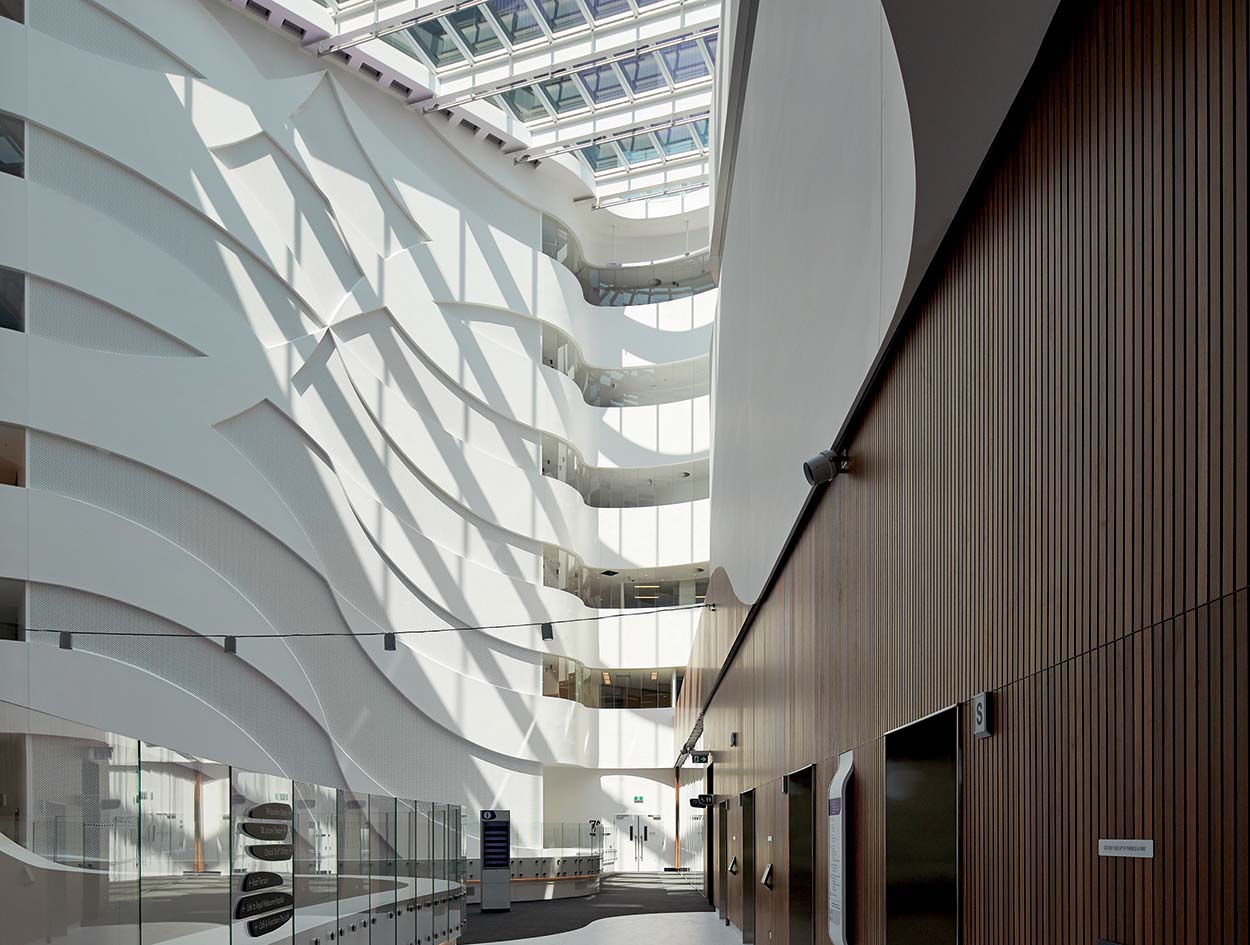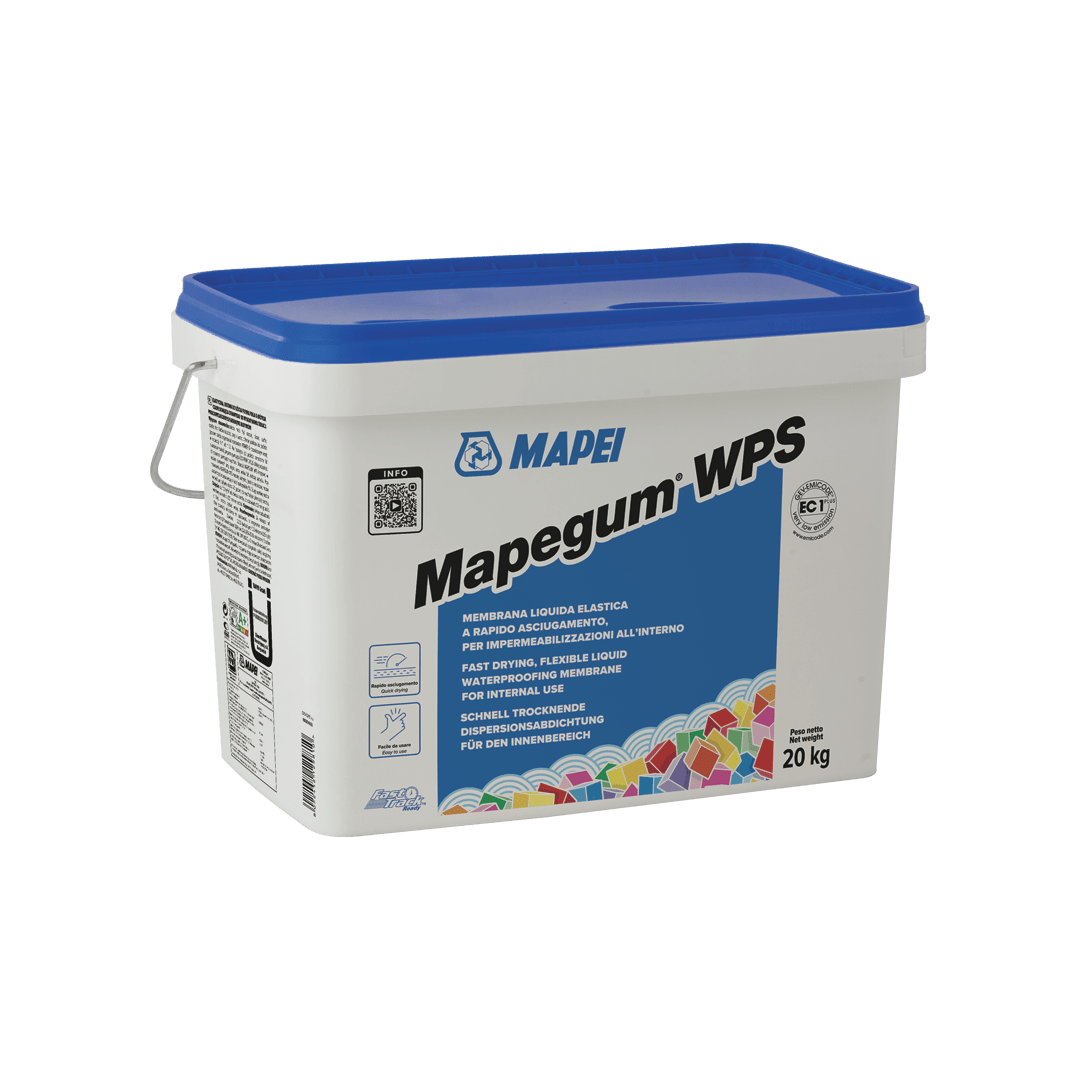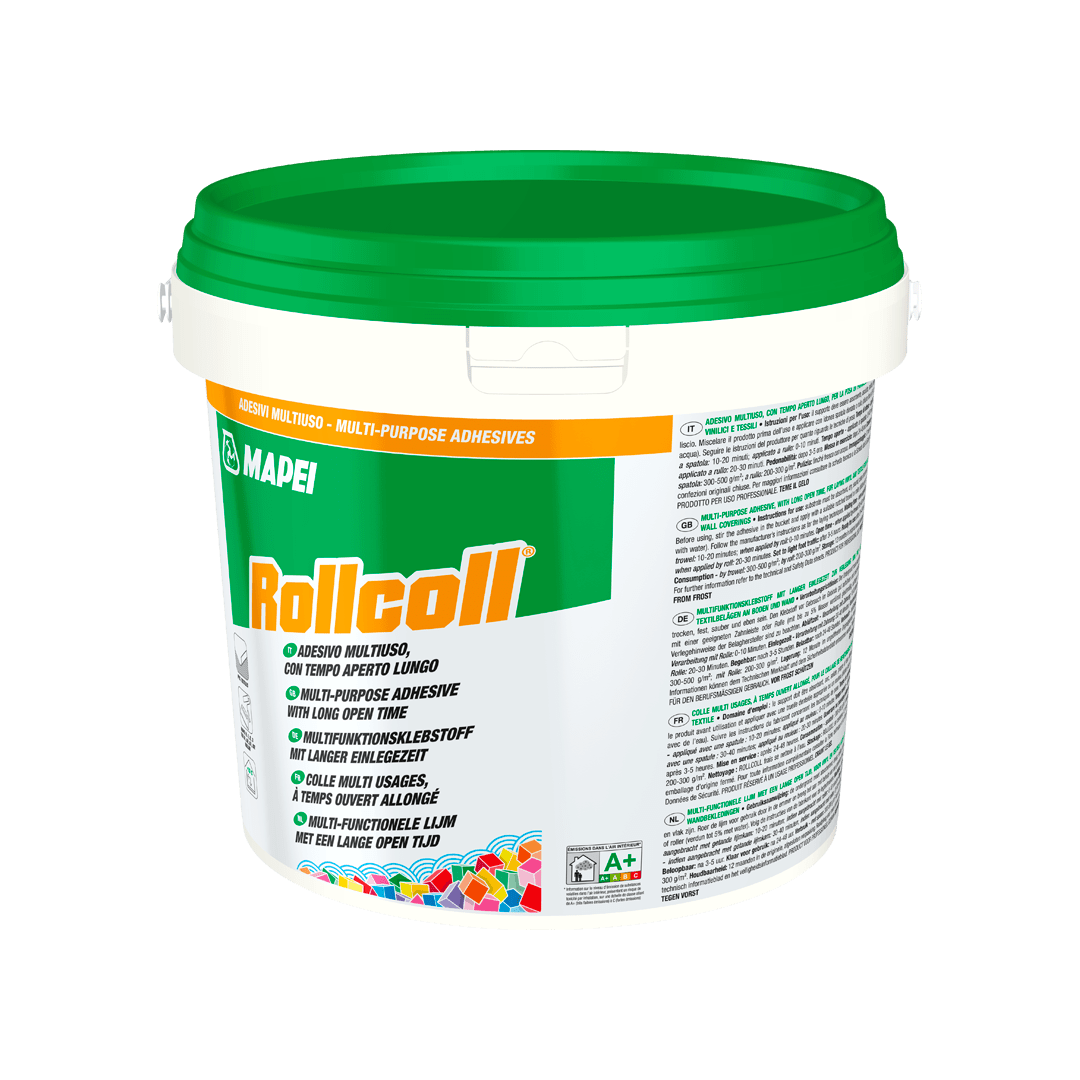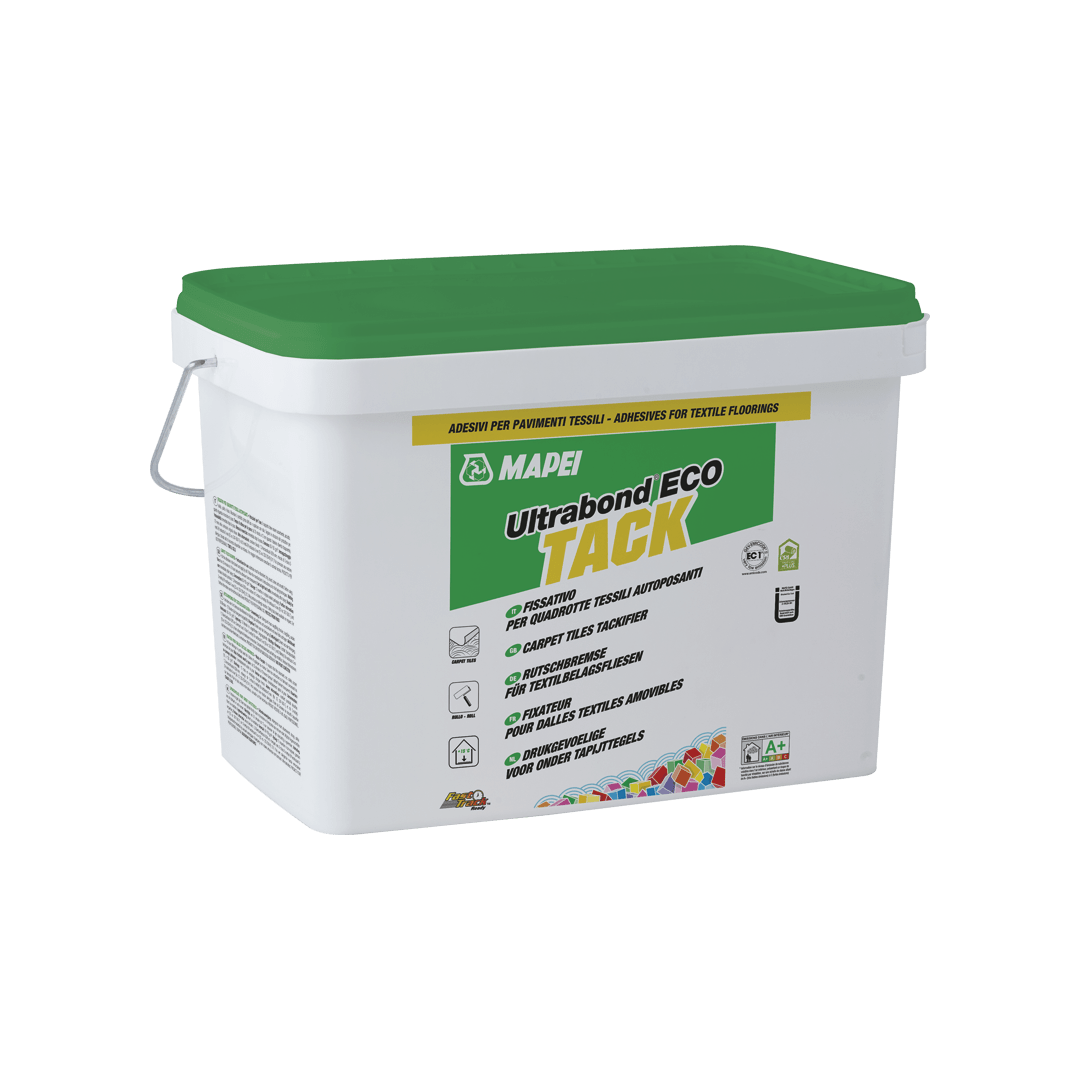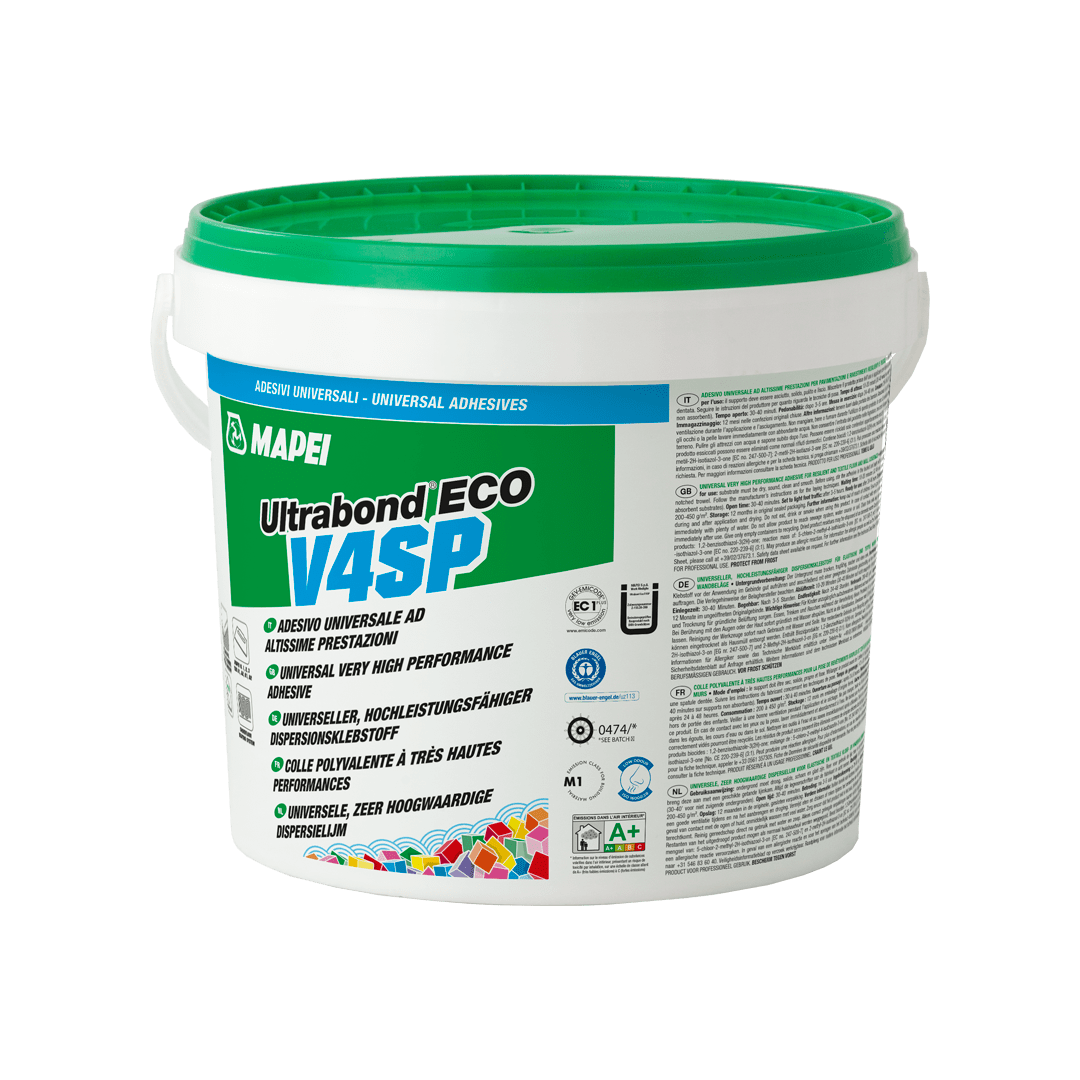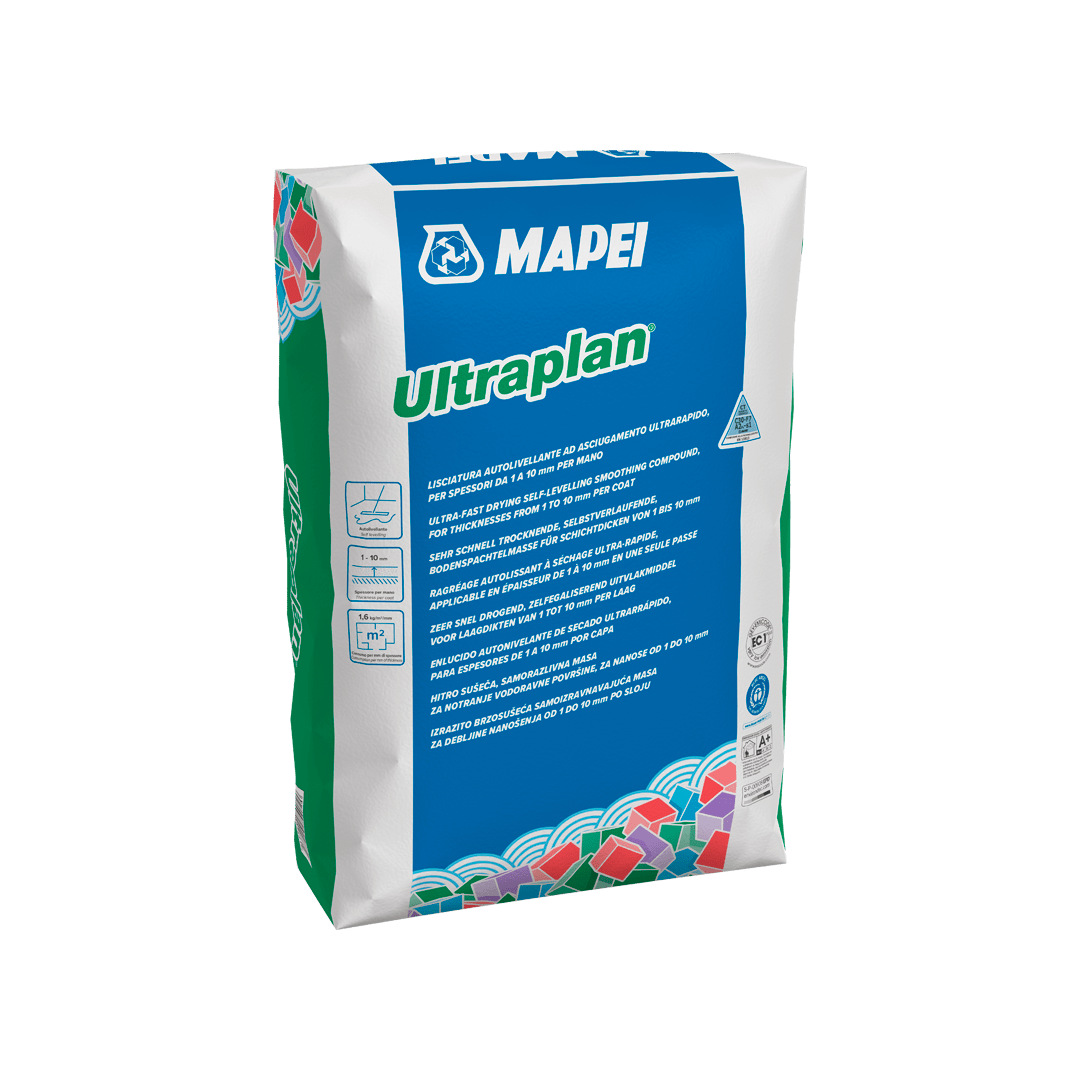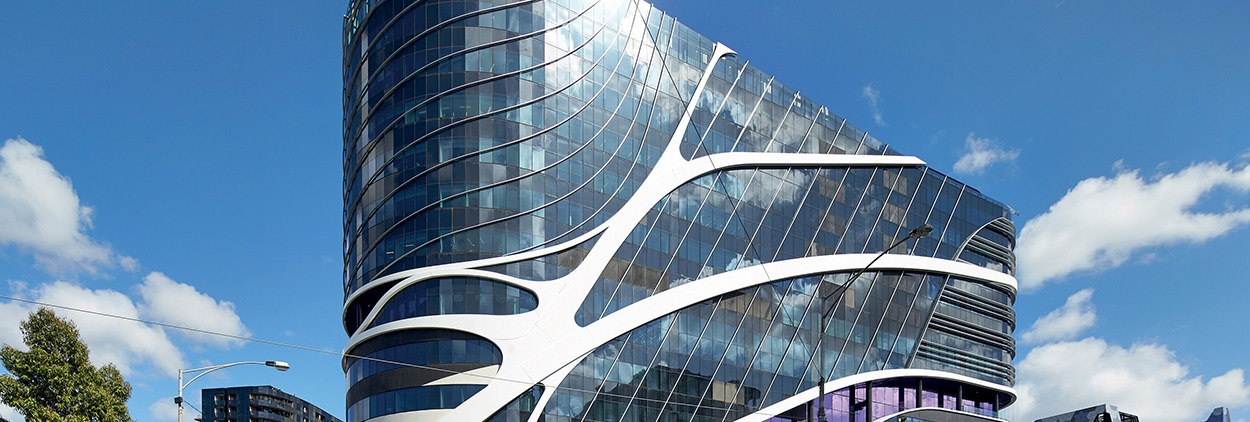
Victorian Comprehensive Cancer Centre
Vinyl and textile wall and floor coverings applied in a new hospital complex specialising in the research and treatment of tumours.
Located in the biomedical district of Parkville, a suburb of Melbourne, the Victorian Comprehensive Cancer Centre (VCCC) was inaugurated in July last year. The hospital complex has become Australia’s leading oncology centre for the research and treatment of tumours and for the quality of training for its medical and paramedical personnel, thanks also to the cutting-edge equipment available and the hospital’s research laboratories
Located in the biomedical district of Parkville, a suburb of Melbourne, the Victorian Comprehensive Cancer Centre (VCCC) was inaugurated in July last year.
The hospital complex has become Australia’s leading oncology centre for the research and treatment of tumours and for the quality of training for its medical and paramedical personnel, thanks also to the cutting-edge equipment available and the hospital’s research laboratories.
The structure extends over an area of 130,000 m2 and has thirteen floors above ground level and a further four floors below ground level reserved for parking.
Although the VCCC is separated from the Royal Melbourne Hospital by a busy main road, the two hospitals are connected by three covered bridges so that patients, visitors and medical personnel can move freely between the two structures.
A HOSPITAL DESIGNED FOR RESEARCH AND TREATMENT
Something of a novelty in Australian hospital architecture is the large central atrium, known as the “Welcome Lounge”. Illuminated by natural light, it stands at the centre of the structure and makes finding your way and moving around inside the hospital that much easier.
The complex has 160 beds for long-term patients, 110 beds for the day hospitals and chemotherapy, 8 operating theatres, 28 treatment rooms for the doctors and nurses, 8 radiotherapy bunkers and 97 doctors’ studios.
Plenty of space has also been set aside for teaching and training classrooms, as well as areas for seminars and meetings and a large conference hall.
The idea behind the VCCC was that it would become Australia’s leading centre for the research and treatment of tumours: which is why it also has 10 research laboratories, where around 600 research scientists can carry out their work. The wet laboratories (specially designed structures where chemical substances, medicines and biological material can be tested in safety with no risk of biological contamination) are located on the upper floors of the structure. All the research areas were purpose-designed so that they could be reconfigured in the future and used for other purposes.
WELLBEING FOR THE PATIENTS AND SAFETY FOR THE HOSPITAL STAFF
The directors and designers of the hospital specified the application of products which were not only rapid, but that also guaranteed the wellbeing of patients and the complete safety of the medical staff; which is why Mapei Technical Services proposed, where possible, a series of products with excellent performance characteristics that also have the capacity to guarantee a low impact on the environment and on the health of the workers using the products and the end users of the structure.
The intervention commenced by applying PLANISEAL EMB on all the concrete substrates, a two-component waterproofing primer, produced in the USA and distributed in Australia, that forms a vapour barrier and reduces the transmission of moisture.
The substrates (a total surface area of around 100,000 m2) were then treated with ECO PRIM T, solvent-free acrylic primer with very low emission of VOC. To create a perfectly flat surface before bonding the selected coverings, ULTRAPLAN self-levelling, ultra rapid-hardening smoothing and levelling compound was applied on the substrates in layers from 1 to 10 mm thick.
In the bathrooms and in the areas with problems of damp (around 60,000 m2), the surfaces were also waterproofed with MAPEGUM WPS quick-drying, elastic liquid membrane before bonding the coverings. To provide extra strength, MAPETEX SEL non-woven polypropylene fabric was applied between each coat of MAPEGUM WPS.
In the areas around the drains, the substrates were initially primed with ECO PRIM T and then levelled off with UC LEVELLER quick-hardening skimming compound, produced and distributed exclusively in Australia, ideal for surfaces that require a high level of resistance to heavy loads and high volumes of traffic.
The intervention was completed by skimming all the uneven surfaces with LATEXPLAN TRADE smoothing compound with high compressive strength, suitable for substrates subjected to high volumes of traffic, and with PLANIPREP SC high-performance, fibre-reinforced skimming compound.
Once the substrates had dried out, the flooring company installed around 60,000 m2 of vinyl flooring using ULTRABOND ECO V4 SP installation system - around 2,000 m2 of vinyl flooring (Gertflor Taralay) was applied to the walls using ROLLCOLL acrylic adhesive in water dispersion.
To bond around 40,000 m2 of self-laying carpet tiles (Interface Carpet Tiles), the product recommended was ULTRABOND ECO TACK tackifier in water dispersion for carpet tiles with very low emission of volatile organic compounds (VOC).





